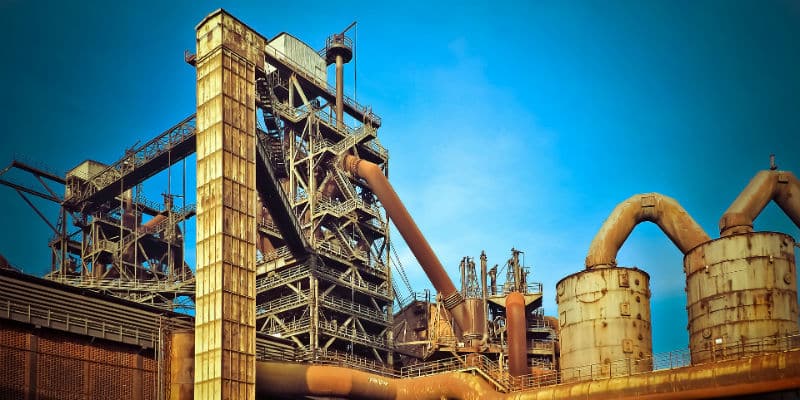For most of the 20th century, America’s “Rust Belt”—stretching across the Great Lakes region and areas in the Midwest—was an economic powerhouse. The region served as the central hub of the United State’s manufacturing industry, and by the 1950s it was home to almost half of all American jobs. However, the clock was ticking on America’s “Golden Age” of manufacturing. A global economic recession in the early 1970s kicked off a sustained economic decline from which the region has never recovered.
People have pointed fingers at everything from poor political leadership and shortsightedness to the inexorable march of globalization and automation in an effort to find someone or something to blame for the Rust Belt’s collapse. One particularly common theme among explanations is the lack of innovation. Because competition within the American manufacturing industry was weak, the thinking goes, firms failed to innovate and rendered themselves unprepared to compete with foreign manufacturing firms later on when globalization began to accelerate.
Unsurprisingly then, many hope that an injection of innovation into the economy will cure the area’s malaise. However, the narrative surrounding the role of innovation in the region’s decline doesn’t tell the whole story. In reality, lots of innovation has taken place—American manufacturing has grown far more efficient and, according to the US Bureau of Labor Statistics, almost doubled its output during the last 30 years. If innovation has in fact been happening, then what continues to hold the Rust Belt back from becoming the powerhouse it once was?
The answer lies in understanding that not all innovations affect an economy the same way. Yes, there has been innovation in the Rust Belt. It just hasn’t been the right type of innovation to create jobs and reignite the prosperity of the past.
The unseen cost of efficiency
The majority of innovations in American manufacturing during the last half-century have been what we refer to as efficiency innovations, which allow companies to do more with fewer resources. Examples include factories that increasingly use robotics to automate production and supply-chain innovations that allow firms to employ cheaper labor in other parts of the world. While these innovations save money and make manufactured goods cheaper for consumers, they have also done away with many US manufacturing jobs, prompting a host of young, talented people to uproot and resettle in more prosperous regions.
This same process occurred in the agricultural industry a little more than a century earlier, when a series of technological innovations enabled farmers to produce far more food with fewer resources. This was undoubtedly a good thing for a growing global population, but it eliminated countless farming jobs, leading many to migrate from the countryside into cities in search of work. Despite their broad positive effects, efficiency innovations, on their own, have a negative impact on a region’s development, as seen in the Rust Belt.
To spark an economic revival, the Rust Belt needs to prioritize innovations that create jobs and enable more people to participate in its economy. To see how this can be done, we need look no further than an innovation that helped propel the region to prosperity in the early 20th century: Henry Ford’s Model T.
Make it simple and affordable
At the beginning of the 20th century, very few people owned cars because they were accessible only by the rich, who tended to use them for leisure and status. But when Ford created a car that was affordable and simple enough for a majority of people to own, he created a new market with millions of new consumers, and it changed the way they lived. The innovation directly created many new jobs within the car manufacturing industry, but also had a vast ripple effect, creating jobs in transportation, tourism, auto-repair, restaurants, hotels, and dozens of other industries. As more and more people began to use cars, the government, now benefiting from the tax revenue of the increased economic activity, began investing in the industry as well, building roads and creating laws and regulations to support it.
This type of innovation—which we call a market-creating innovation—makes products affordable and accessible to people for whom other options are too expensive or complicated. Although not every market-creating innovation will have such a profound effect on development as the Model T, each one follows the same course by building new markets where more people can participate, creating jobs, and laying a foundation for sustainable prosperity. Contrary to the notion that a region like the Rust Belt is too impoverished for innovation to thrive, opportunities for these potent innovations abound wherever people choose not to purchase products or services because they are too expensive or complicated. The Rust Belt, where many households have lower than average incomes, is one such place.
Innovation has become a vague buzzword that people associate with different meanings. If we don’t understand the causal mechanism behind why certain kinds of innovation lead to specific economic growth outcomes, it’s easy to end up with an unspecific strategy akin to sprinkling magic innovation dust across a region and hoping for prosperity to emerge. However, if Rust Belt innovators, investors, and government leaders know where to look, they will find opportunities to implement the right kind of innovations—market-creating innovations—and jobs, profits, and prosperity will follow.
The good old days of the Rust Belt’s “Golden Age” may be long gone, but with the right type of innovation, the region’s brightest days might still be ahead.



